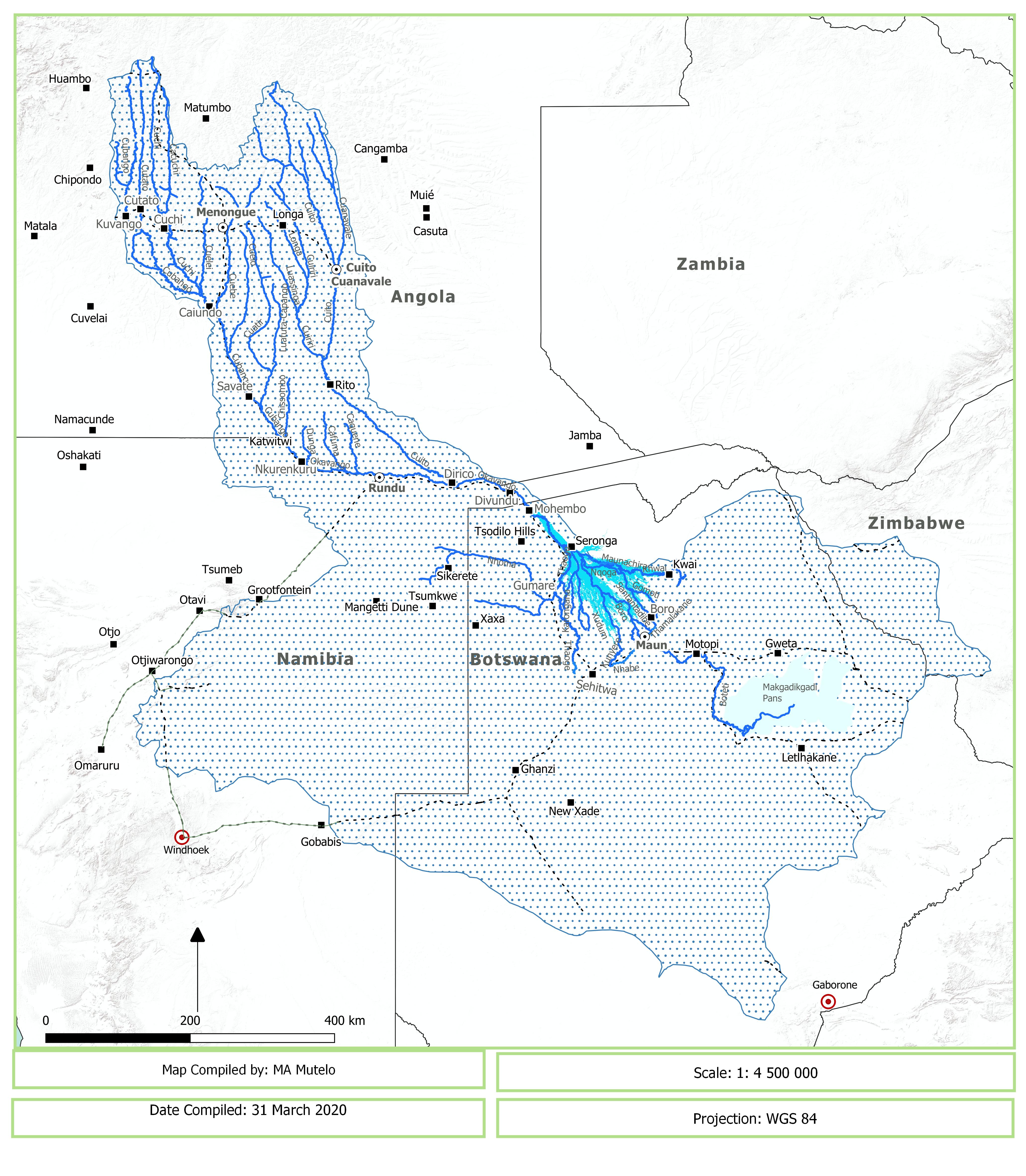- Home
- About Us
- Background
- Mandate
- Cubango Okavango River Basin
- Governance
- Strategy and Approach
- Member States
- Our Work
- Partners
- Climate Resilient Infrastructure Development Facility (CRIDF)
- European Union (EU)
- Southern African Development Community (SADC)
- Swedish International Development Cooperation Agency (SIDA)
- The World Bank (WB)
- United Nations Development Programme (UNDP)
- United States Agency For International Development (USAID)
- Resources
- News and Events
- Opportunities
- Contact Us
- FAQ's
- Connect With Us
- i
- t
- f

Cubango Okavango River Basin (CORB)
The Cubango-Okavango River Basin is a transboundary basin with a network of river systems traversing through Angola, Botswana and Namibia. It comprises of a network of rivers whose headwaters are in the Angolan highlands where the Cuito and Cubango Rivers originate. The topographic extent of the CORB is approximately 700,000 km2, but derives its principal flow from 120,000 km2 of sub-humid and semi-arid rangeland in the Cuando Cubango Province of Angola. The Cubango-Okavango stretches for approximately 1,100 kms and is drained by the Cubango (referred to as Kavango in Namibia and Okavango in Botswana). The Cubango-Okavango River forms the boundary of Namibia and Angola, and on this stretch is joined by the main tributary, the Cuito, before flowing through the panhandle as it enters Botswana and spilling into the Okavango Delta in Botswana.
The basin supports predominantly rural communities most often located either adjacent to the river or along roads. Relative to capital cities and main centres of economic activity, the basin populations of these countries are remote; this is reflected in lower social development indicators in the basin than those for national social development. In general, the people of the basin are poorer, less healthy, and less educated than other groups in their respective countries. This is particularly the case in Angola where war curtailed social and economic development. Fortunately, the riparian countries recognize that economic and social development within the basin is essential for improvement of socio-economic status and livelihoods of communities within the basin.
The CORB is internationally important for its biodiversity and biological productivity. The Okavango Delta is the best-known feature of the CORB. It is one of the largest Ramsar Sites in the world. The Delta was declared a World Heritage site under the UNESCO convention in 2014. With its high variety of habitat types which supports high diversity of biological life forms, it remains one of the most important areas for biodiversity conservation in the world.
Currently the basin is still relatively under developed, a scenario which qualifies it, as one of the basins least affected by socio-economic development in African. The current low economic development in the basin, particularly in the upper catchment is largely due to a 30 year civil war in Angola which significantly hindered economic development in that part of the basin despite the availability of key resources. However, with prevailing stable political landscape in Angola, significant economic development is inevitable.
A recent Multi-Sectotal Investment Opportunity Analysis for the CORB identified potential developments which include hydro-electric power dams and large scale irrigation schemes among others which have potential to significantly affect hydrological flows and the quality of water within the basin. It therefore essential to ensure that such developments are as sustainable as possible to ensure continued economic and environmental integrity of the basin. This requires basin-wide understanding, common understanding of the basin’s problems and issues, and a blueprint for a development pathway guided by an adaptive management principles.

Thematic Areas & Activities
News
subscribe for news notification by email
Photo Credit: Kostatin Luchansky, National Geographic, Okavango Wilderness Project.

